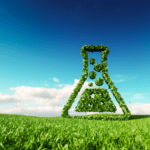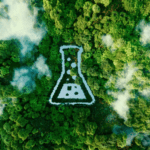Understanding the circularity of the EU textiles value chain
The European Environment Agency’s (EEA) recent report, Circularity of the EU Textiles Value Chain in Numbers, highlights the urgent need for a shift towards more sustainable textile production and consumption. As one of the most resource-intensive industries, the textiles sector faces significant challenges in reducing waste, improving recycling rates, and enhancing the durability of products.
Key findings from the report on textiles value chain
- Low recycling rates: Only a small fraction of textiles are currently recycled into new garments, with the majority ending up in landfill or incineration
- High resource consumption: The EU textile industry relies heavily on virgin materials, leading to substantial environmental impacts from production to disposal
- Durability and longevity challenges: Many textiles have a short lifespan due to poor durability, limiting their potential for reuse and second-hand markets
- Need for better circular strategies: The report highlights the importance of eco-design, improved waste collection, and enhanced recycling technologies to close the loop in textile production
The role of durability testing in circularity in textiles value chain
Improving product longevity is a critical step in reducing the environmental impact of textiles. Durability testing plays a key role in ensuring that garments withstand wear and tear, extending their lifespan and reducing the demand for new materials. By focusing on durability, brands can enhance product quality, contribute to circular economy goals, and meet growing consumer expectations for sustainable fashion.
How Eurofins Sustainability Services can help
At Eurofins Sustainability Services, we support businesses in making their textiles more sustainable through
- Durability testing – Assessing garment resilience to wear, washing, and environmental stressors. Watch webinar on-demand to learn more!
- Life cycle assessment (LCA) – Analysing the environmental footprint of textile products. Watch webinar on-demand to learn more!
- Chemical compliance testing – Ensuring textiles meet regulatory requirements and avoid harmful substances. Watch webinar on-demand to learn about Chem-STTM Chemical Smart Testing!
- Microplastics testing – Detailed microplastic analysis in the environment and have one of the world’s leading microplastic testing and analysis services in this field. Read white paper to learn how microplastics are shed from textile sources.
As the industry moves towards circularity, durability testing and responsible sourcing are becoming essential. Contact us to find out more about how our services can support your sustainability goals.





